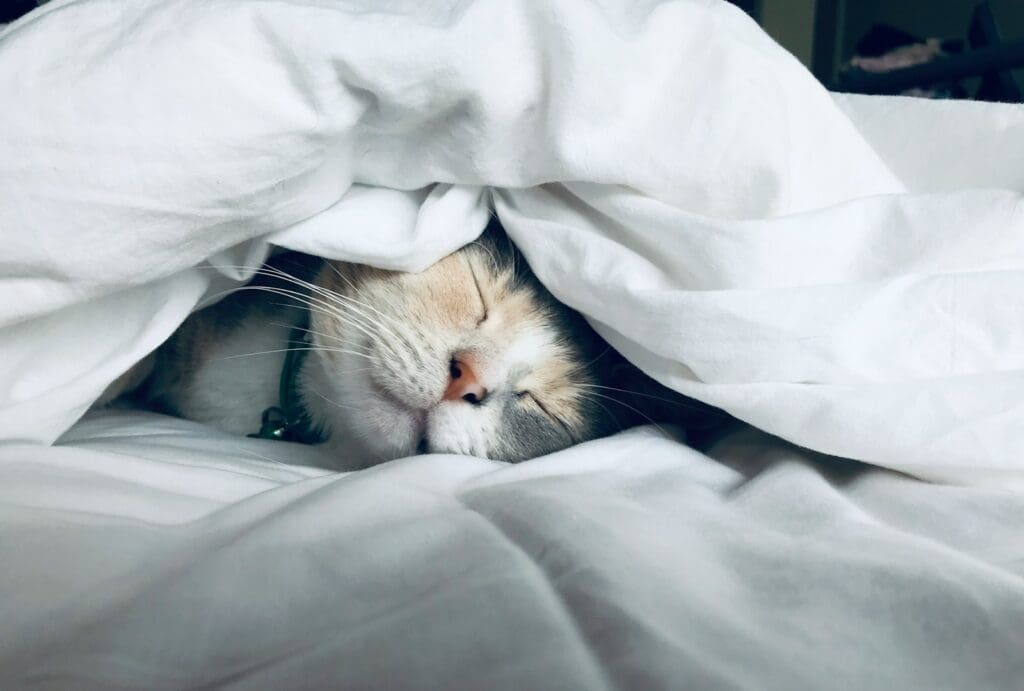If you’ve got an outside cat you want to bring inside, you might be a bit puzzled as to where you should start. Today, we’re going over a few tips to help you coax them inside and get them used to life as an indoor kitty.
Why Come Inside?

Some people might question the decision to take an outdoor kitty and move them inside. In short, it’s just safer for cats to live inside. They won’t be exposed to dangers like fast-moving cars, other animals, and potential toxins. They’ll also not cause damage to local wildlife with their hunting behavior.
Feral Cats

Before we dive in, let’s discuss feral cats. Just because a cat has never lived around humans before, that doesn’t mean they can’t adapt to life indoors. Cats are domesticated animals and even feral cats can learn that humans are their friends and mean them no harm!
Use Traps

Don’t try to scoop up a feral cat by hand and just plop them into your home. Use a safe trap with a closing door to capture them and then safely move them inside. Trying to move anything other than a tiny kitten by hand is just asking for injury and stress.
Spay or Neuter

Once you’ve got the cat captured, it’s a good idea to take them to the vet and get them spayed or neutered. This will help reduce their desire to get back outside and meet mates. It also means that if they do slip back outside, you won’t need to worry about a litter of kittens.
Give Them Time

Once you get the outdoor kitty inside, give them some time to acclimate to their surroundings. If you needed a trap to bring them indoors, let them hang out inside the trap for an hour or so before you let them out into one room. Keep the door closed and keep food, water, and a litter box in there with them. As they become more comfortable, gradually open more of the house up to them.
Get Fun Toys

Cats who used to live outdoors are used to having birds, rodents, and bugs to chase all day. They need plenty of mental stimulation to not get bored when they begin living inside. Make sure you provide them with tons of toys and plenty of hands-on playtime.
Set up a Catio

Even indoor cats love laying on a closed patio (or “catio,” in this case) and feeling the breeze on their whiskers. Consider installing a closed back porch for your new cat friend to spend time on so they can feel close to nature without being exposed to exterior dangers.
Pheromones

You can try using pheromones in your home to help calm a rowdy cat. If they’re used to being outdoors, they might find it difficult to relax in an enclosed space. Using calming pheromones can help soothe them and get them to come to terms with their new living situation.
Read More: Why You Should Build a Catio This Summer
Patience

Just be patient with your new cat and let them take things at their own pace. Don’t try to force them to spend time with you or harass them with toys if they don’t want to play. Some cats just might take some time to get used to living indoors, and that’s okay.
Read More: 10 Ways to Keep Your Outdoor Cats Safe
Proactive Approach

Talk to your veterinarian and see if you can head off some potential behavioral problems before they even happen. For instance, make sure you have plenty of litter boxes already in the home, as well as high perches and soft blankets for the new cat to find. Preempting behavior problems is much easier than addressing them after the fact.
Read More: 10 Tips to Win Over Your Cat






